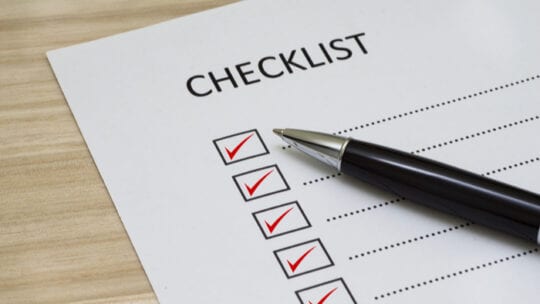
A crisis is coming.
I say this not to sound an alarm, but instead to emphasize the importance of being prepared. Regardless of the business you work in or represent, or where you are located, it’s inevitable that your organization will find itself in difficult circumstances requiring thoughtful and decisive action.
And if you don’t have a crisis communication plan with designated strategies, roles, actions and follow-up, you will be hopelessly behind before the trouble starts.
But all of us are ready to tackle a crisis, aren’t we? Maybe not.
Nearly all (95 percent) business leaders from 73 countries in 29 industries said their crisis management capabilities could improve, a recent survey from PWC Research found. It polled 2,800 executives.
A PRNEWS/CS&A International survey found that while a majority (62 percent) of companies said they have crisis communication plans, half either said their plan needed updating or didn’t know if it did.
And a JOTW Communications’ study showed that while 59 percent of communicators say they have a prepared communication strategy, only 45 percent have a crisis communication plan.
We also learned, harshly, during 2020, that events can overtake us with little or no warning. You can have myriad game plans for crises; however, there always will be at least one that comes out of nowhere. Case in point: While it’s very unlikely that anyone incorporated strategies for a pandemic, it’s a certainty that many will do so going forward.
All of which is to say that if preparing for an unpredictable event seems like an oxymoron, you are thinking about it the wrong way. Scenarios, procedures and agendas that can be formulated, tested and refined should also be adaptable and elastic enough to serve as frameworks to help cope with whatever challenging circumstances are lurking.
What follows are tips to serve as guides to best practices, and, depending on your level of acquaintance with crisis management, I hope they are helpful as new ideas, refreshers, jumping-off points, a checklist or a combination.
- Define your terms. One organization’s crisis can be another’s ‘Let’s wait and see.’ It’s important, in quieter times, to identify the kinds of things that might cause trouble for your business, and, as I say above, plan for the unplanned. Defined parameters, even if they’re wide, will help you know when to implement the crisis plan. But in general, consider a crisis to be something that has brewed, bubbled and hit the boiling point, and can now absolutely cause damage to your reputation, safety and financial health if not addressed immediately.
- Form a rapid response team. A predesignated list of who should do what and when, and how to contact them, is vital. The CEO, or other key executives, may be unavailable, but internal and external constituencies will want, and need, direction through the most effective communication channels. Advance materials should also include templates of a media statement, an employee email, executive bios and other information that you may need to create and tailor very quickly. Also recommended is a yearly (if not more) Crisis Planning Day, which can include mock scenarios, crisis drills and brainstorming.
- Right is better than fast. As noted above, audiences will anxiously wait to hear from you. But you have only one chance to get it right. Dispensing inaccurate information can have dire and irreversible consequences to reputation and credibility. So, by all means act promptly, but not sloppily. Yes, easier said than done.
- Communicate often. People will want to know that you’re paying attention and working on solutions. The more they hear from you, the more likely they will believe what you’re telling them (remembering, of course, that honesty is not only the best, but the only, policy).
- Empathy, humanity, compassion. Make sure that the tone of all communication includes language that conveys understanding. In the wake of the pandemic and social unrest, publics are attuned to sincerity and are very good at determining if you actually mean what you say. Speaking of which…
- What’s happening on social media? What we once knew as the news cycle you now can call the news recycle (I’m coining this term immediately). There is an infinite number of online opportunities for news dissemination and sharing, sometimes, unfortunately, becoming corrupted into mis- or disinformation. In a crisis (and pretty much anytime) there’s no such thing as monitoring your social channels too often.
- Debrief, extensively. Once the crisis is ‘over,’ take the opportunity to revisit and examine each stage of the process for what went right or wrong in your communication. The data you gather will be invaluable going forward and will help ensure that your plan remains updated and fluid. It should inform how you handle the next crisis (yes, there will almost certainly be another one).
These are some of the basics of a sound and flexible crisis communication plan. They can help you anticipate, respond and pivot, when and where necessary. They’re essential to know, and I hope you never need any of them.
Michelle Olson is managing partner, Lambert, and national chair of PRSA.
